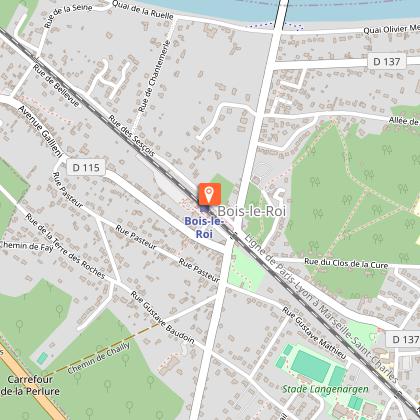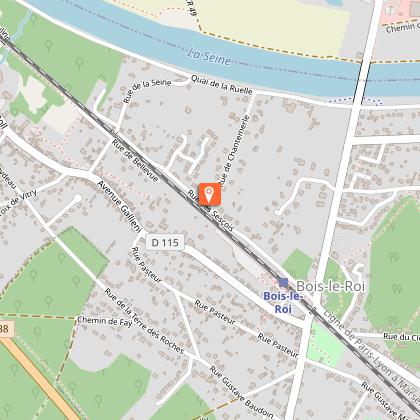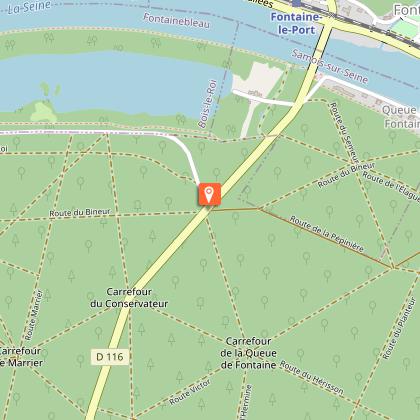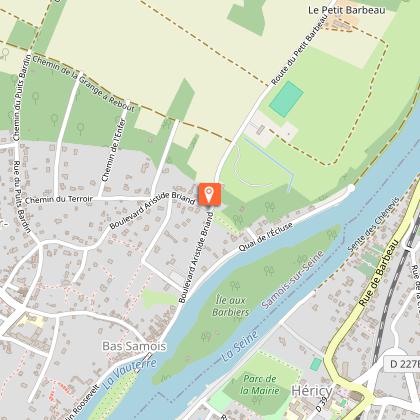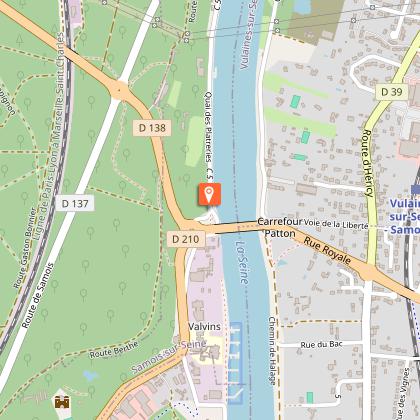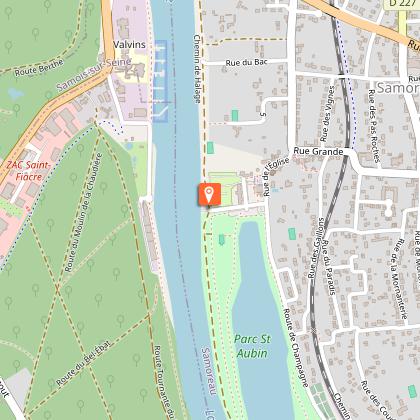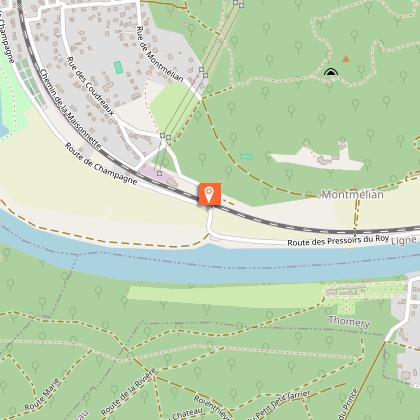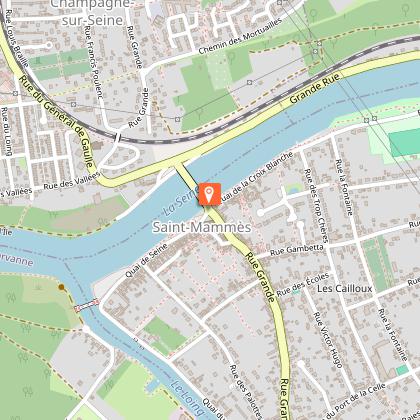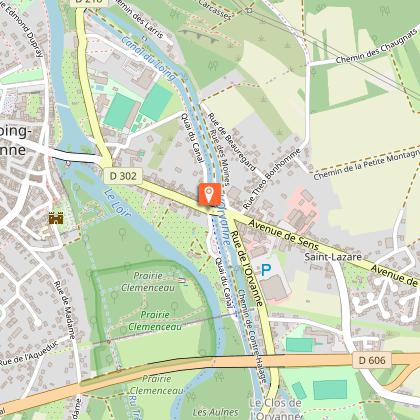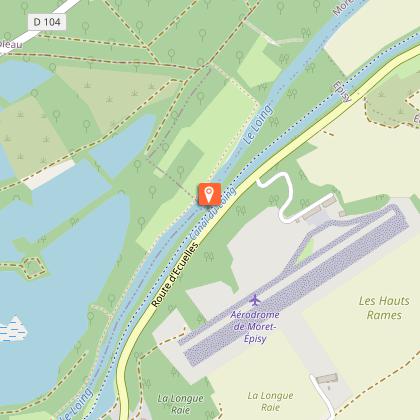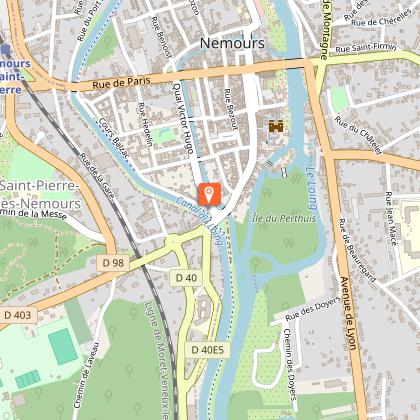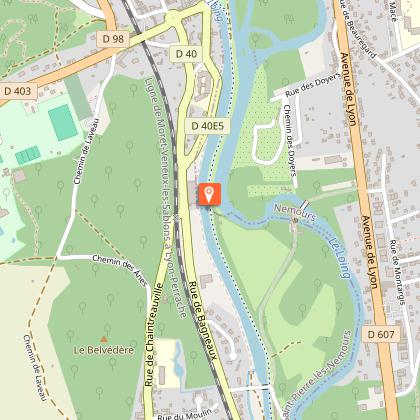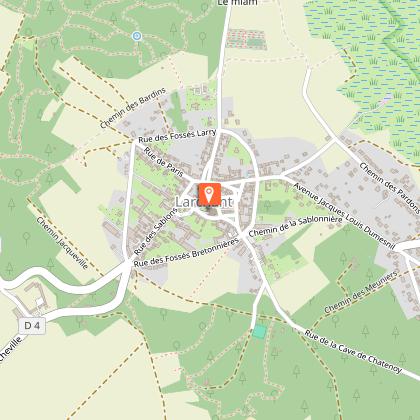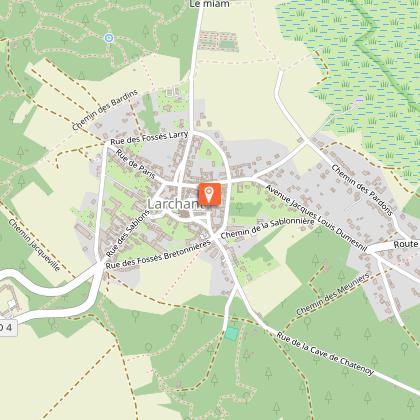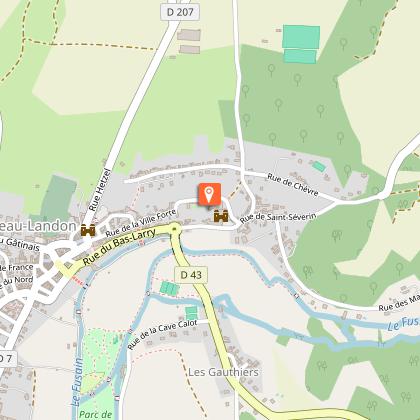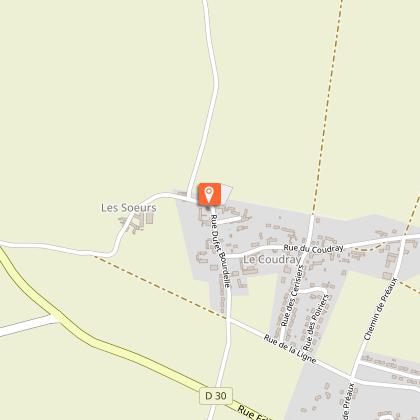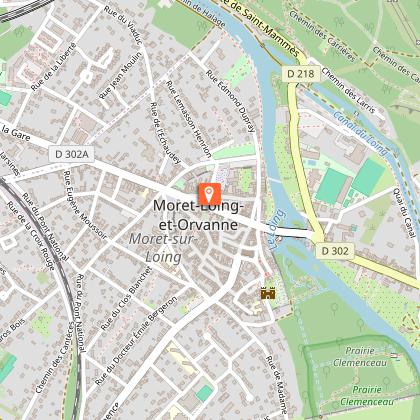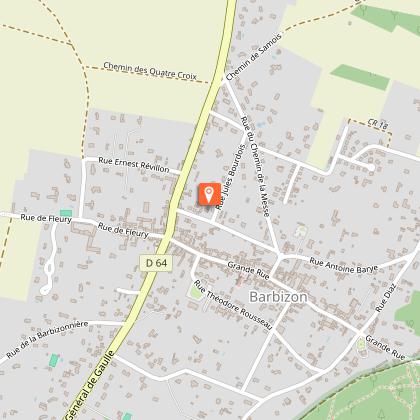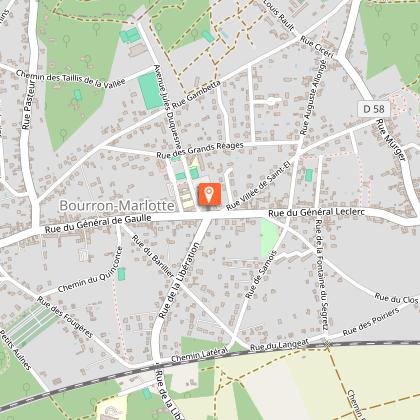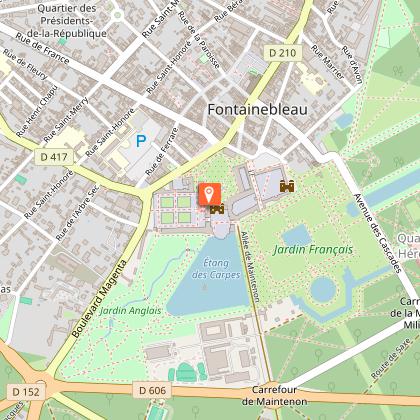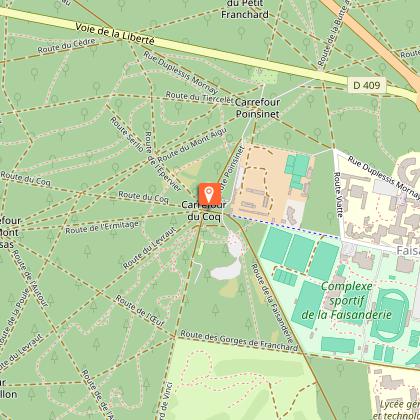Alerta
Alertas
Tipo de práctica
En bicicleta de carretera
Presentación
Mapa
Pasos
Puntos de interés
Resumen de Cirkwi
Calificaciones y reseñas
Ver alrededor
La Scandibérique sur Seine-et-Marne - de Bois-le-Roi à Souppes-sur-Loing

Crédito : Amelie Laurin
El resumen de Cirkwi
Descubre Scandibérique: Ciclismo desde Bois-le-Roi hasta Souppes-sur-Loing
Embárcate en un viaje a través de los paisajes encantadores del sur de Seine-et-Marne con la ruta Scandibérique, un tesoro propuesto por Seine et Marne Attractivité. Esta aventura en bicicleta de 60 km a lo largo de los ríos Sena y Loing ofrece más que solo ejercicio físico; es una puerta de entrada al alma de Francia. Desde los densos bosques clasificados hasta los espacios naturales preservados, cada pedalada te acerca al corazón de la historia y la cultura francesas. A través de pueblos rebosantes de carácter y paisajes salpicados de hitos históricos, la experiencia trasciende la mera observación turística. Siente la brisa, sumérgete en las vibrantes atmósferas y conviértete en parte del tapiz vivo que es esta región.
Breve descripción técnica
Esta ruta de 54,9 km de longitud cuenta con una altitud máxima de 78 metros y una mínima de 41 metros. Los ciclistas deben prepararse para un desnivel positivo total entre 217 y 225 metros. A pesar de las pendientes relativamente modestas, este terreno ondulado puede suponer un desafío moderado, lo que lo hace perfecto para ciclistas intermedios. El viaje desde Bois-le-Roi hasta Souppes-sur-Loing está marcado por una serie de características técnicas que mejoran la experiencia ciclista, exigiendo resistencia y estrategia. Básicamente, ofrece una mezcla equilibrada de esfuerzo físico y disfrute escénico.
Consejos estacionales y seguridad
Embarcarse en esta aventura en bicicleta requiere una preparación cuidadosa. La primavera ofrece paisajes florecientes, pero los caminos pueden estar húmedos; asegúrate de que tu bicicleta esté equipada para el barro. El verano promete vistas verdes, pero la hidratación es clave bajo el sol. El otoño trae un caleidoscopio de colores, aunque las hojas caídas pueden ser resbaladizas. El invierno, aunque sombrío, tiene su propia belleza desgarradora, pero las condiciones heladas requieren precaución. Siempre lleva un casco, ten un kit de reparación a mano e informa a alguien sobre tu itinerario. El seguimiento de estas recomendaciones mejora la seguridad y el disfrute, independientemente de la estación.
Joyas históricas de Seine-et-Marne
La región de Seine-et-Marne está impregnada de una rica historia y cultura, actuando como guardiana y escaparate del patrimonio de Francia. Desde la puerta de entrada acogedora de Bois-le-Roi hasta Souppes-sur-Loing, esta ruta es un museo vivo al aire libre. Pasa por áreas que han presenciado siglos de historia, desde batallas medievales hasta florecimientos artísticos del Renacimiento. Los castillos, iglesias y museos a lo largo del camino no son simples atracciones, sino libros de historias tallados en piedra, invitándote a descubrir las narrativas que dieron forma a esta cautivadora región de Francia.
Información meteorológica para una visita óptima
Entender el clima de Seine-et-Marne
El clima en Seine-et-Marne es predominantemente oceánico, caracterizado por inviernos suaves y veranos agradables, lo que lo hace accesible para andar en bicicleta durante todo el año. Para una experiencia ideal, planifica tu viaje entre finales de primavera y principios de otoño. Durante estas estaciones, el clima es más favorable, con lluvias mínimas y temperaturas que no son demasiado calurosas ni demasiado frías. Siempre verifica el pronóstico antes de tu recorrido, ya que las condiciones climáticas pueden fluctuar y potencialmente afectar tu experiencia de ciclismo.
Embárcate en un viaje a través de los paisajes encantadores del sur de Seine-et-Marne con la ruta Scandibérique, un tesoro propuesto por Seine et Marne Attractivité. Esta aventura en bicicleta de 60 km a lo largo de los ríos Sena y Loing ofrece más que solo ejercicio físico; es una puerta de entrada al alma de Francia. Desde los densos bosques clasificados hasta los espacios naturales preservados, cada pedalada te acerca al corazón de la historia y la cultura francesas. A través de pueblos rebosantes de carácter y paisajes salpicados de hitos históricos, la experiencia trasciende la mera observación turística. Siente la brisa, sumérgete en las vibrantes atmósferas y conviértete en parte del tapiz vivo que es esta región.
Breve descripción técnica
Esta ruta de 54,9 km de longitud cuenta con una altitud máxima de 78 metros y una mínima de 41 metros. Los ciclistas deben prepararse para un desnivel positivo total entre 217 y 225 metros. A pesar de las pendientes relativamente modestas, este terreno ondulado puede suponer un desafío moderado, lo que lo hace perfecto para ciclistas intermedios. El viaje desde Bois-le-Roi hasta Souppes-sur-Loing está marcado por una serie de características técnicas que mejoran la experiencia ciclista, exigiendo resistencia y estrategia. Básicamente, ofrece una mezcla equilibrada de esfuerzo físico y disfrute escénico.
Consejos estacionales y seguridad
Embarcarse en esta aventura en bicicleta requiere una preparación cuidadosa. La primavera ofrece paisajes florecientes, pero los caminos pueden estar húmedos; asegúrate de que tu bicicleta esté equipada para el barro. El verano promete vistas verdes, pero la hidratación es clave bajo el sol. El otoño trae un caleidoscopio de colores, aunque las hojas caídas pueden ser resbaladizas. El invierno, aunque sombrío, tiene su propia belleza desgarradora, pero las condiciones heladas requieren precaución. Siempre lleva un casco, ten un kit de reparación a mano e informa a alguien sobre tu itinerario. El seguimiento de estas recomendaciones mejora la seguridad y el disfrute, independientemente de la estación.
Joyas históricas de Seine-et-Marne
La región de Seine-et-Marne está impregnada de una rica historia y cultura, actuando como guardiana y escaparate del patrimonio de Francia. Desde la puerta de entrada acogedora de Bois-le-Roi hasta Souppes-sur-Loing, esta ruta es un museo vivo al aire libre. Pasa por áreas que han presenciado siglos de historia, desde batallas medievales hasta florecimientos artísticos del Renacimiento. Los castillos, iglesias y museos a lo largo del camino no son simples atracciones, sino libros de historias tallados en piedra, invitándote a descubrir las narrativas que dieron forma a esta cautivadora región de Francia.
Información meteorológica para una visita óptima
Entender el clima de Seine-et-Marne
El clima en Seine-et-Marne es predominantemente oceánico, caracterizado por inviernos suaves y veranos agradables, lo que lo hace accesible para andar en bicicleta durante todo el año. Para una experiencia ideal, planifica tu viaje entre finales de primavera y principios de otoño. Durante estas estaciones, el clima es más favorable, con lluvias mínimas y temperaturas que no son demasiado calurosas ni demasiado frías. Siempre verifica el pronóstico antes de tu recorrido, ya que las condiciones climáticas pueden fluctuar y potencialmente afectar tu experiencia de ciclismo.
Generado automáticamente.
IGN tarjetas

2417OTR - FORÊT DE FONTAINEBLEAU RESISTANTE FORET DES TROIS PIGNONS
Editora : IGN
Recopilación : TOP 25 RÉSISTANTE
Escalera : 1:25 000
17.20€

2417OT - FORÊT DE FONTAINEBLEAU FORÊT DES TROIS PIGNONS
Editora : IGN
Recopilación : TOP 25 ET SÉRIE BLEUE
Escalera : 1:25 000
13.90€

2416SB - MELUN MORMANT
Editora : IGN
Recopilación : TOP 25 ET SÉRIE BLEUE
Escalera : 1:25 000
13.90€
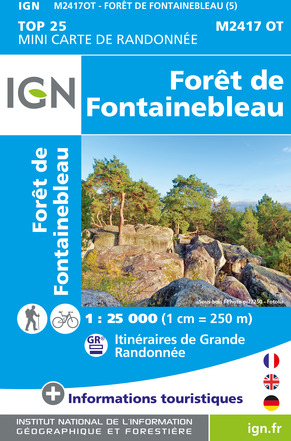
M2417OT - FORÊT DE FONTAINEBLEAU
Editora : IGN
Recopilación : MINI TOP 25
Escalera : 1:25 000
8.80€

190 PARIS CHANTILLY FONTAINEBLEAU
Editora : IGN
Recopilación : TOP 100
Escalera : 1:100 000
8.40€

118 PARIS CHARTRES PNR DE LA HAUTE VALLÉE DE CHEVREUSE
Editora : IGN
Recopilación : TOP 100
Escalera : 1:100 000
8.40€

119 PARIS SENS PNR DU GÂTINAIS FRANÇAIS
Editora : IGN
Recopilación : TOP 100
Escalera : 1:100 000
8.40€

D77 SEINE-ET-MARNE
Editora : IGN
Recopilación : CARTES DÉPARTEMENTALES IGN
Escalera : 1:150 000
5.90€

D75-95 ÎLE-DE-FRANCE OUEST
Editora : IGN
Recopilación : CARTES DÉPARTEMENTALES IGN
Escalera : 1:150 000
5.90€

NR08 CENTRE-VAL DE LOIRE
Editora : IGN
Recopilación : CARTES RÉGIONALES IGN
Escalera : 1:250 000
6.80€

NR03 ÍLE DE FRANCE
Editora : IGN
Recopilación : CARTES RÉGIONALES IGN
Escalera : 1:250 000
6.80€

NR04 - GRAND EST RECTO/VERSO ARDENNE CHAMPAGNE
Editora : IGN
Recopilación : CARTES RÉGIONALES IGN
Escalera : 1:250 000
6.80€
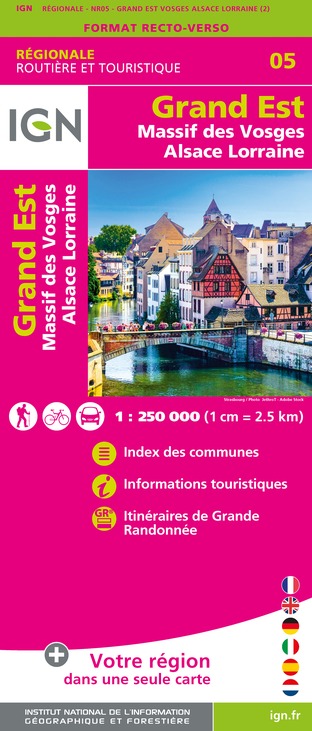
NR05 GRAND EST RECTO/VERSO MASSIF DES VOSGES ALSACE LORRAINE
Editora : IGN
Recopilación : CARTES RÉGIONALES IGN
Escalera : 1:250 000
6.80€
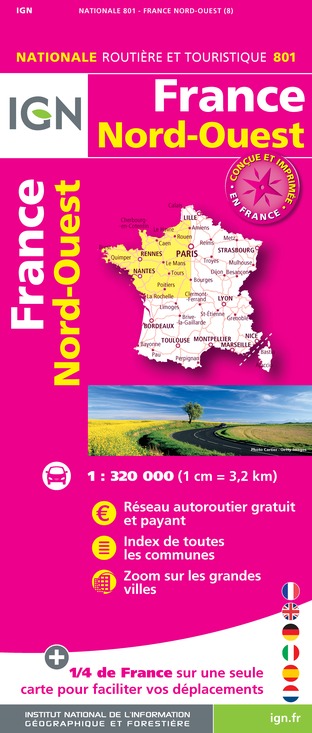
801 FRANCE NORD OUEST
Editora : IGN
Recopilación : CARTES NATIONALES IGN
Escalera : 1:320 000
6.10€

EUROPE
Editora : IGN
Recopilación : DÉCOUVERTE DES PAYS DU MONDE IGN
Escalera : 1:2 500 000
7.00€
Informaciónes técnicas
En bicicleta de carretera
Dificultad
No especificada
Dist.
55 km
Tipo de práctica
En bicicleta de carretera
Mostrar más
Perfil altimétrico
Punto de partida
77590
Bois-le-Roi
Lat : 48.474568Lng : 2.692292
Pasos
Puntos de interés
Autor de los datos

propuesto por
Seine et Marne Attractivité
Quartier Henri IV - Place d'Armes 77300 Fontainebleau France
Calificaciones y reseñas
Para ver alrededor
